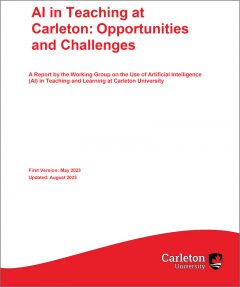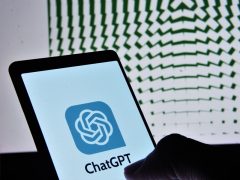Generative AI is a type of artificial intelligence that uses machine learning to generate new content by analyzing and processing vast amounts of data from diverse sources. Generative AI tools can generate text, images, video, sound, and code. Different tools are trained on different datasets and with different training methods. The generated responses of these tools are probabilistic, which can result in errors in responses. Large language models (LLMs), for instance, specialize in analyzing and processing text and generating new text. Different LLMs have distinct datasets and employ unique training methods. GPT 3 and GPT 4 are examples of LLMs. OpenAI’s ChatGPT is a chatbot created on GPT 3 or GPT 4.Some of these tools can effectively generate various types of text (ChatGPT, Jasper), computer code (GitHub, Copilot), equations (Wolfram), scientific papers with references (Elicit), or images (DALL-E, Midjourney).
Convened in February 2023, the AI working group has been working to help identify opportunities and challenges related to generative AI in teaching and learning and propose recommendations and guidelines for Carleton’s teaching and learning community.

On this page your will find:
- TLS’s guide to Generative AI in the classroom
- Teaching Without using AI.
- The MacOdrum Library Guide to AI in citations
- The MacOdrum Library Guide to AI Tools
- Other Relevant Generative AI Resources
TLS is offering an ongoing spotlight series on Generative AI developments and practice in Teaching and Learning. Please visit our TLS Events page for upcoming webinars and workshops.
Quicklinks
Was this page helpful?
10 people found this useful


